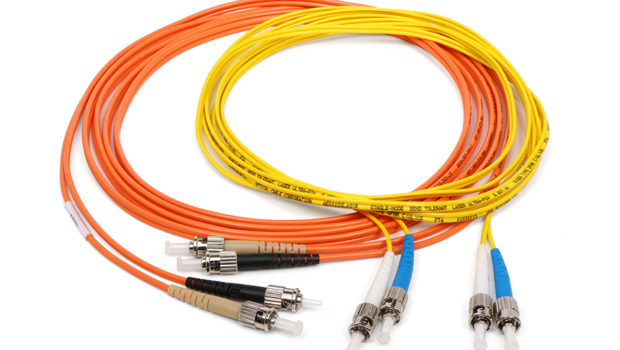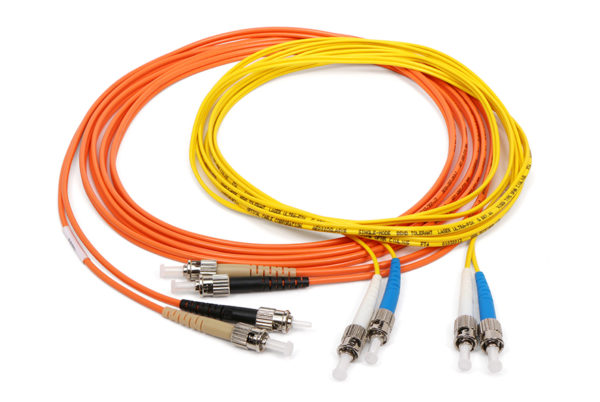What Is a Fiber Jumper?
As we increasingly rely on different devices such as routers in our homes or servers in our offices, we need to find ways to connect all these devices. Ethernet cables have been in use for decades as the primary way we connect different devices such as a server to a computer. Fiber optic jumpers have risen in popularity as they seek to be the alternative to ethernet cables. They solve some of the problems ethernet cables have including allowing for longer cable runs and faster connection speeds.
Fiber Jumpers
Fiber jumpers are last-mile and in-home fiber cables that are used to connect you to a central hub or to connect different devices in your home. A fiber jumper is simply a fiber cable that has connectors installed on both ends. Fiber jumpers, also called fiber jumper cables can be used in different applications including Cable TV, for horizontal and vertical connections inside buildings, and in fiber to the home installations.
Because of their different applications, fiber jumpers vary in the types of cables as well as connectors. When it comes to the types of cables used, fiber jumpers come in singlemode or multimode fiber jumpers. Singlemode fiber jumpers usually have glass strands that are 9 microns in diameter. Multimode jumpers have different diameters for their strands as well as different classifications for these strands. The diameters used are 50 and 62.5 microns in diameter.
If you are looking for short distance installations, multimode fiber jumpers are the better option while singlemode jumpers are better for long-distance installations and data transmission.
Depending on your application, there are several things that you should keep an eye out for when choosing a fiber jumper. We will look at some of them below.
Simplex or Duplex
Copper jumper cables have the ability to send and receive data at the same time and in both directions. This is because they have multiple pairs of conductors that enable them to do so. However, most fiber jumper cables have only one strand of glass, which means data can only flow in one direction.
If you want to connect two pieces of equipment so they communicate with each other, you need two strands of glass. One of the strands will transmit data and the other one will receive data. The option you have is using two simplex cables that each have a single strand for each of the connections between the equipment.
Another solution is to use a duplex cable. Such a cable comes with a pair of glass fibers as well as two connections for each of the fibers.
Connection Types
The most common types of connections used at the end of the fiber jumpers include ST, SC, LC, FC, MU, E2000, and MTRJ connections. Most fiber jumper cables have the same type of connection on both ends. However, some special cases require that you connect devices that require different types of connectors. In such cases, you will find fiber jumpers that have dissimilar connectors.
In other cases, you may find a fiber cable with a connector on one end and an unterminated fiber strand on the other end. This usually happens when the person doing the installation does not know what type of connection they need on the other end and will have to install the connector in the field. These types of cables are called pigtails.
Jackets
The jacket is the material that covers the fiber cable. The two things to think about when choosing a fiber jumper is the diameter as well as the materials used to make the jacket.
Fiber jumpers come with jackets that have different diameters. Thinner diameters are great when installing cables where you need a lot of flexibility. Additionally, those with a smaller diameter are great where you have little space or need to install lots of cables side by side. A thicker jacket is a better option for fiber cables that run through a cable tray which requires them to be more rigid.
The jacket material has to be durable enough to withstand the rigors as well as the strain put on the cable as it is being installed. Additionally, the jacket may be required to be nonflammable. This is especially important in installations where there is a risk of a fire.
Length
As with most other types of cables, fiber jumpers come in different lengths. These are measures in meters or feet depending on where you live. It is always better to go for a longer cable and have some of it hanging on your wall or tucked behind a desk than having one that is too short that you have to think about moving your equipment.
Fiber optic jumpers have become a critical part of the way we connect equipment. They enable most of our communication because without them, some of us would not have internet and some internet services might be slower than we are used to them. If you are looking to use fiber jumpers in your home, so you need to know how to choose the right ones, and looking at the factors we have listed above, that should not be easier to do.













